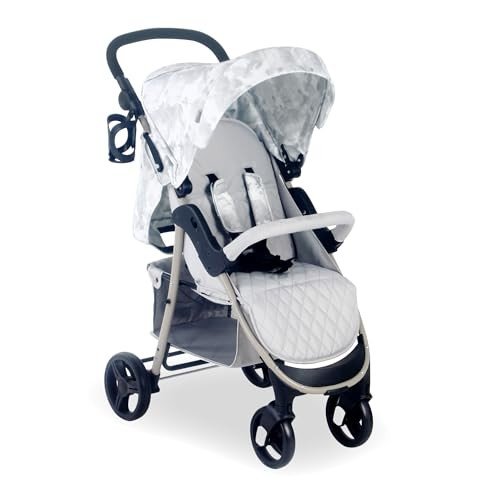Understanding Baby Prams and Pushchairs: A Comprehensive Guide
When it concerns looking after a newborn or an infant, couple of items are as vital as a trustworthy baby pram or pushchair. These movement help offer a safe, comfortable way to carry babies while permitting parents and caregivers the flexibility to navigate the world. This short article explores the different elements of baby prams and pushchairs, assisting moms and dads make notified choices about which item may be best fit for their household's needs.
What Are Baby Prams and Pushchairs?
Baby Prams: These are typically developed for babies and extremely young babies. They have totally reclining seats that enable a flat position, making them appropriate for newborns. Prams often feature a large, deep body, supplying extra defense and comfort.
Pushchairs: Pushchairs, likewise called strollers, are more versatile and can usually be adjusted for young children also. They are lightweight, simple to maneuver, and frequently feature a range of seating positions, consisting of reclined and upright.
| Function | Baby Prams | Pushchairs |
|---|---|---|
| Appropriate Age | Newborn to around 6 months | Newborn to 3 years or more |
| Seat Position | Fully reclined | Adjustable (reclined and upright) |
| Weight | Much heavier, more robust | Lighter, more compact |
| Folding Mechanism | More complex folding | Normally simpler folding |
| Maneuverability | Can be less maneuverable | Extremely maneuverable |
Secret Features to Consider
When selecting a baby pram or pushchair, potential purchasers must consider several key features that can influence the usability and comfort for both the child and the caretaker.
1. Security Features
- Five-point Harness: Ensures the baby is firmly strapped in.
- Brakes: Reliable braking systems prevent accidents.
- Stability: A broad base and sound frame boost stability.
2. Convenience
- Cushioning: Ample padding on the seat makes sure convenience.
- Suspension System: Provides a smoother ride on uneven surfaces.
- Canopy: A large, adjustable canopy protects the baby from sun and rain.
3. Mobility
- Weight: Lighter models are easier to raise and bring.
- Folding Mechanism: Easy folding designs permit quick storage and transportation.
- Compact Size: A more compact size makes it simpler to suit vehicle boots and tight areas.
4. Flexibility
- Convertible Options: Some models can be adjusted from a pram to a pushchair.
- Reversible Seat: Allows the baby to deal with the moms and dad or the world, depending on choice.
- Accessories: Look for alternatives that can accommodate cars and truck seats or have a storage basket.
5. Toughness
- Material Quality: Invest in higher-end products for durability.
- Weather Resistance: Water-resistant fabrics ensure that the pram/pushchair can endure various weather.
Kinds Of Baby Prams and Pushchairs
Several types of baby prams and pushchairs meet various function requirements, lining up with parents' specific lifestyles.
1. Travel Systems
Travel systems generally integrate a cars and truck seat and a stroller in one plan, permitting seamless transport from cars and truck to pram or pushchair without disturbing the baby.
2. Umbrella Strollers
Umbrella strollers are lightweight and convenient, developed for much easier maneuverability. They are ideal for quick journeys and may lack some features discovered in full-size strollers.
3. All-Terrain Pushchairs
These are ideal for active families who enjoy treking or taking walks on rugged terrains. They generally include larger wheels for stability.
4. Jogging Strollers
Jogging strollers are created for parents who wish to combine workout with childcare. They include strong frames and repaired front wheels to improve safety throughout a run.
The Importance of Choosing the Right Option
Picking the suitable baby pram or pushchair is not simply a matter of preference; it straight impacts the security and convenience of the baby. In addition, the ideal option can exceptionally influence the way of life of the caregivers.
Benefits:
- Convenience: A well-chosen pram or pushchair makes getaways easier and more pleasurable.
- Health: Proper assistance assists in back and skeletal development in infants.
- Bonding: Outdoors play an important function in parent-child bonding.
Regularly Asked Questions (FAQs)
1. At what age can my baby utilize a pushchair?
Most pushchairs are developed to accommodate infants as young as 6 months, although some models can be adjusted to safely carry newborns when used with compatible cars and truck seats.
2. How do I preserve my baby pram or pushchair?
Routine cleaning is essential. Wipe down the frame and material with a moist fabric and mild soap. Regularly check Pushchair Travel System Sale and brakes for wear and tear.
3. Can I utilize a baby pram for jogging?
Typically, no. Routine baby prams do not have the stability and design needed for jogging. It is safer to utilize a stroller particularly designed for that purpose.
4. How do I choose the ideal size?
Think about how frequently you will be using the pram/pushchair and where. If space is restricted, try to find a more compact design. For outside adventures, go with one with larger wheels and great suspension.
Baby prams and pushchairs are important tools for parents and caregivers, allowing safe and comfy transportation of infants and young children. By understanding the various features, types, and benefits included, caretakers can pick the best mobility aid suited to their needs. Whether it be a sophisticated travel system or a simple umbrella stroller, the ideal purchase can considerably boost the experience of being a parent, making trips pleasurable and worry-free for both moms and dads and babies alike.

